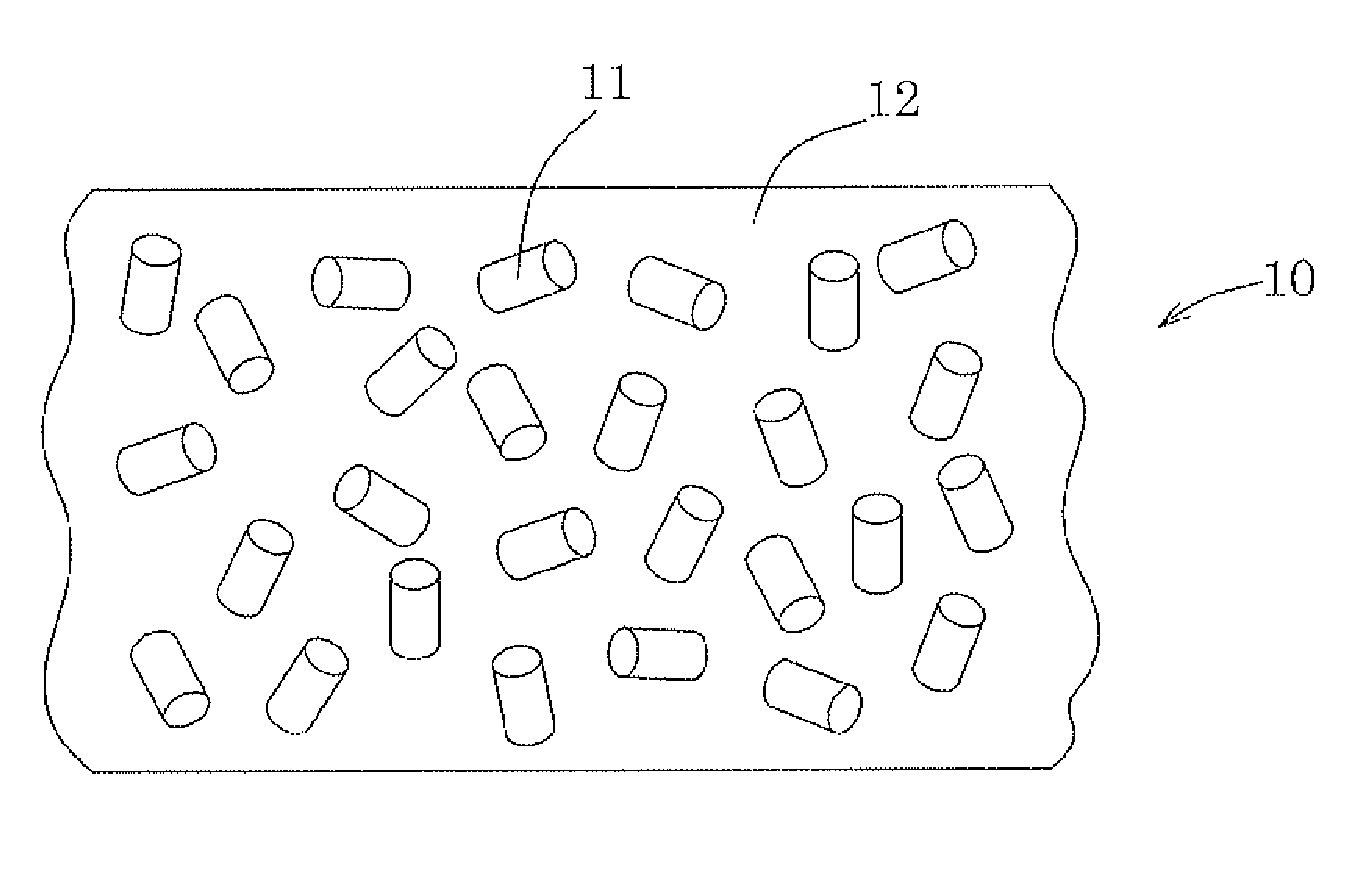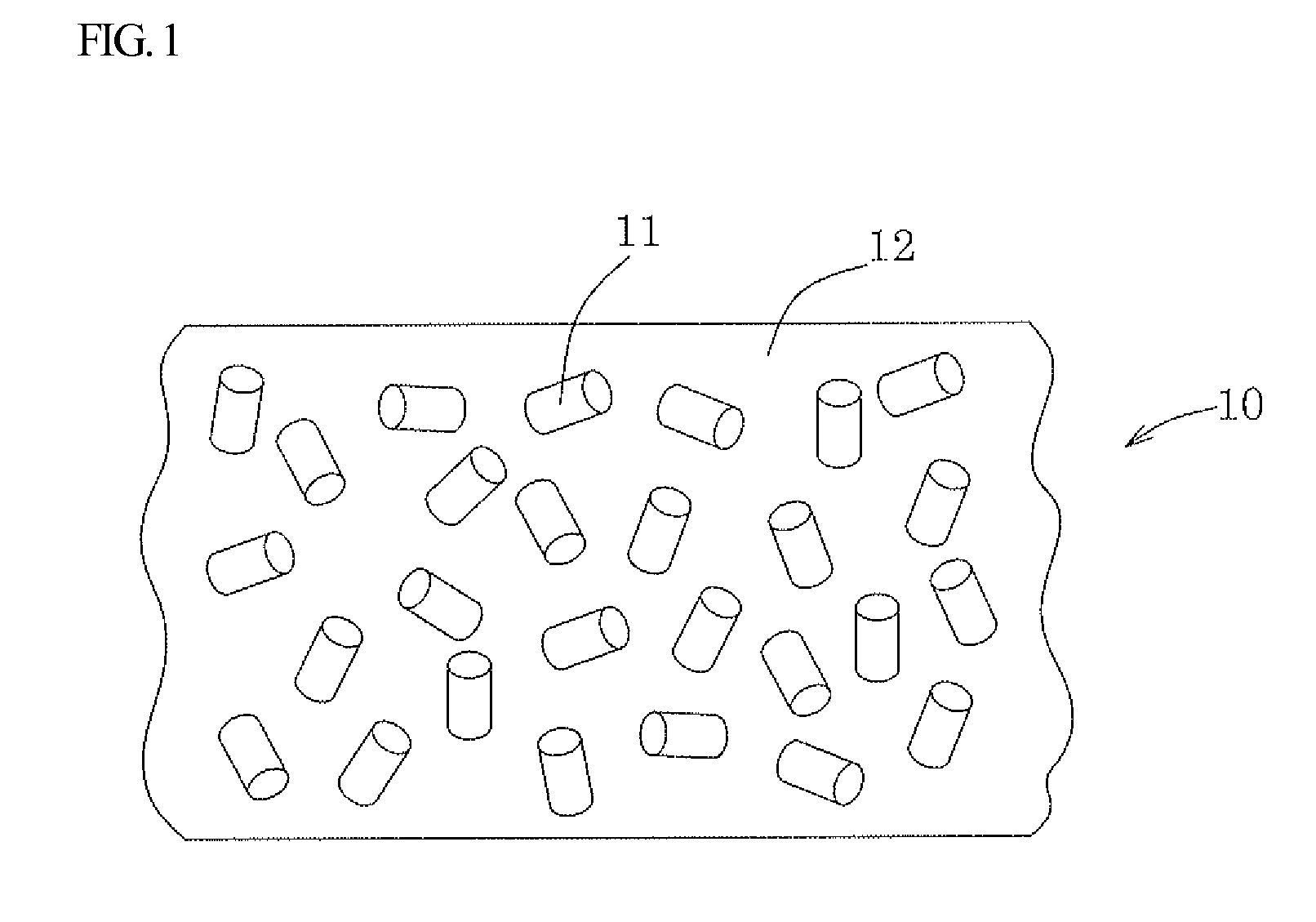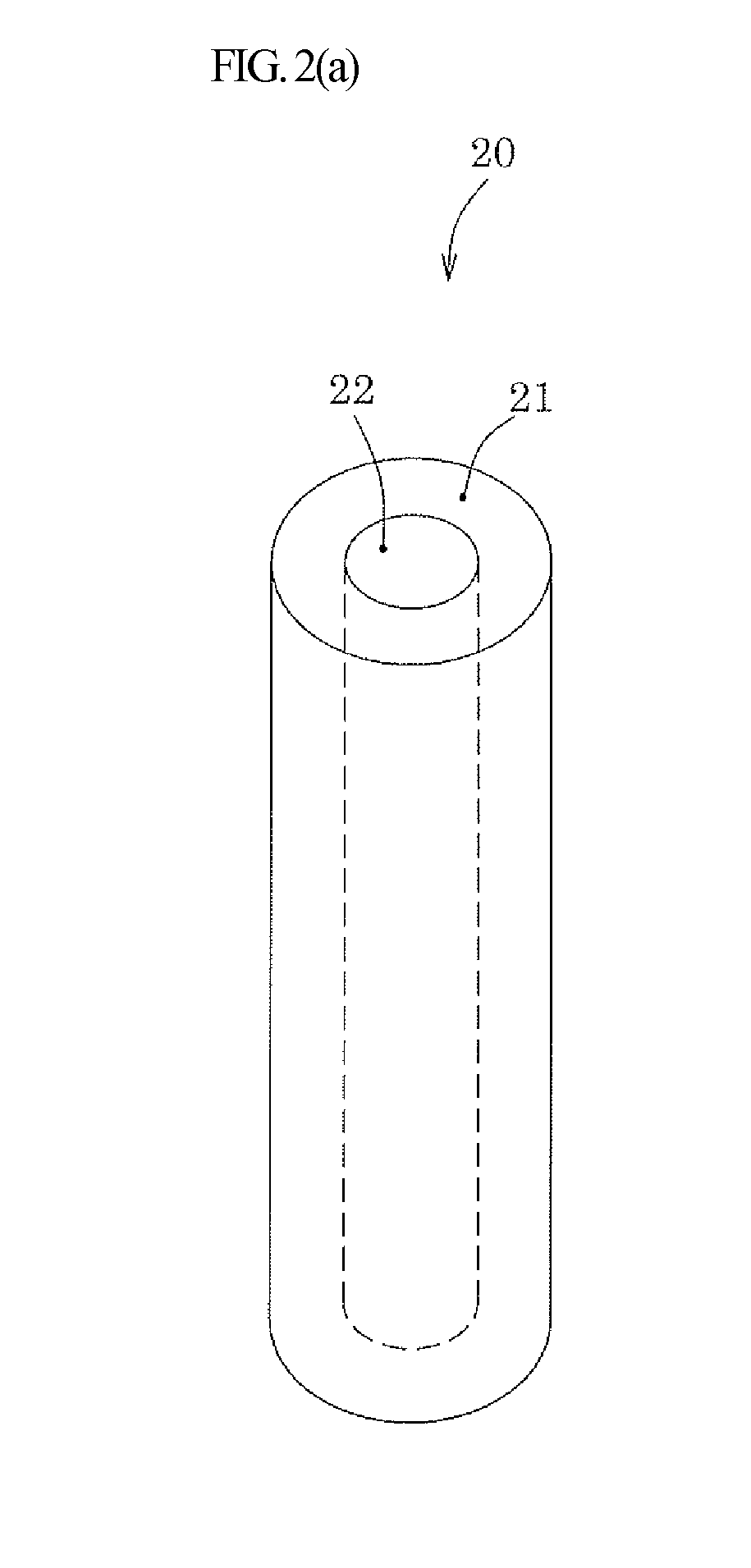Depolarizing film, process for producing the same, and liquid-crystal display
a technology of liquid crystal display and depolarizing film, which is applied in the direction of polarising elements, instruments, optical elements, etc., can solve the problems of poor productivity, difficult mass production of calcite, etc., and achieve excellent productivity, large area, and excellent product quality.
- Summary
- Abstract
- Description
- Claims
- Application Information
AI Technical Summary
Benefits of technology
Problems solved by technology
Method used
Image
Examples
example 1
[0061]An ethylene / vinyl alcohol copolymer (manufactured by Nippon Synthetic Chemical Industry Co., Ltd. under the trade name of “SoarnoL DC321B”, melting point: 181° C.) was melted at 270° C., and was then charged into a nozzle for single-structure fiber spinning and spun at a spinning rate of 600 m / min to obtain a spinning filament having a diameter of 30 μm. The spinning filament was stretched 4 times its initial length in warm water at 60° C. to obtain a continuous fiber having a diameter of 15 μm.
[0062]The continuous fibers were arranged in parallel with each other to prepare a fiber bundle. The fiber bundle was embedded and fixed in a polyvinyl alcohol resin and cut by a cutting blade, and then the polyvinyl alcohol resin was melted by warm water and removed to obtain very short fibers having a fiber length of 30 μm.
[0063]A number of the aforementioned very short fibers were prepared, and were then dispersed in a polyester acrylate-based UV-curable resin liquid (manufactured by...
example 2
[0064]An ethylene / vinyl alcohol copolymer (manufactured by Nippon Synthetic Chemical Industry Co., Ltd. under the trade name of “Soarnol DC321B”, melting point: 181° C.) and a propylene-excessive ethylene / propylene copolymer (manufactured by Japan Polypropylene Corporation under the trade name of “OX1066A”, melting point: 138° C.) were melted at 270° C. and 230° C., respectively, and were then charged into a nozzle for sea-island composite fiber spinning (number of islands per fiber cross section: 37) and spun at a spinning rate of 600 m / min to obtain a spinning filament having a diameter of 30 μm.
[0065]The spinning filament was stretched 4 times its initial length in warm water at 60° C. to obtain a continuous fiber having a diameter of 15 μm. The cross section of the continuous fiber was observed with an electron microscope, and as a result it was confirmed that the continuous fiber had a sea-island structure in which cylindrical second birefringent regions (islands, diameter of c...
example 3
[0067]The depolarizing film prepared in Example 2 was attached to the viewer-side surface of a liquid-crystal panel of a commercially-available mobile phone (manufactured by NTT DOCOMO Inc. under the trade name of “FOMA P905i”) to produce a liquid-crystal display. The display characteristics of the liquid-crystal display are shown in Table 3.
PUM
| Property | Measurement | Unit |
|---|---|---|
| refractive index nB2 | aaaaa | aaaaa |
| refractive index n0 | aaaaa | aaaaa |
| haze | aaaaa | aaaaa |
Abstract
Description
Claims
Application Information
 Login to View More
Login to View More - R&D
- Intellectual Property
- Life Sciences
- Materials
- Tech Scout
- Unparalleled Data Quality
- Higher Quality Content
- 60% Fewer Hallucinations
Browse by: Latest US Patents, China's latest patents, Technical Efficacy Thesaurus, Application Domain, Technology Topic, Popular Technical Reports.
© 2025 PatSnap. All rights reserved.Legal|Privacy policy|Modern Slavery Act Transparency Statement|Sitemap|About US| Contact US: help@patsnap.com



